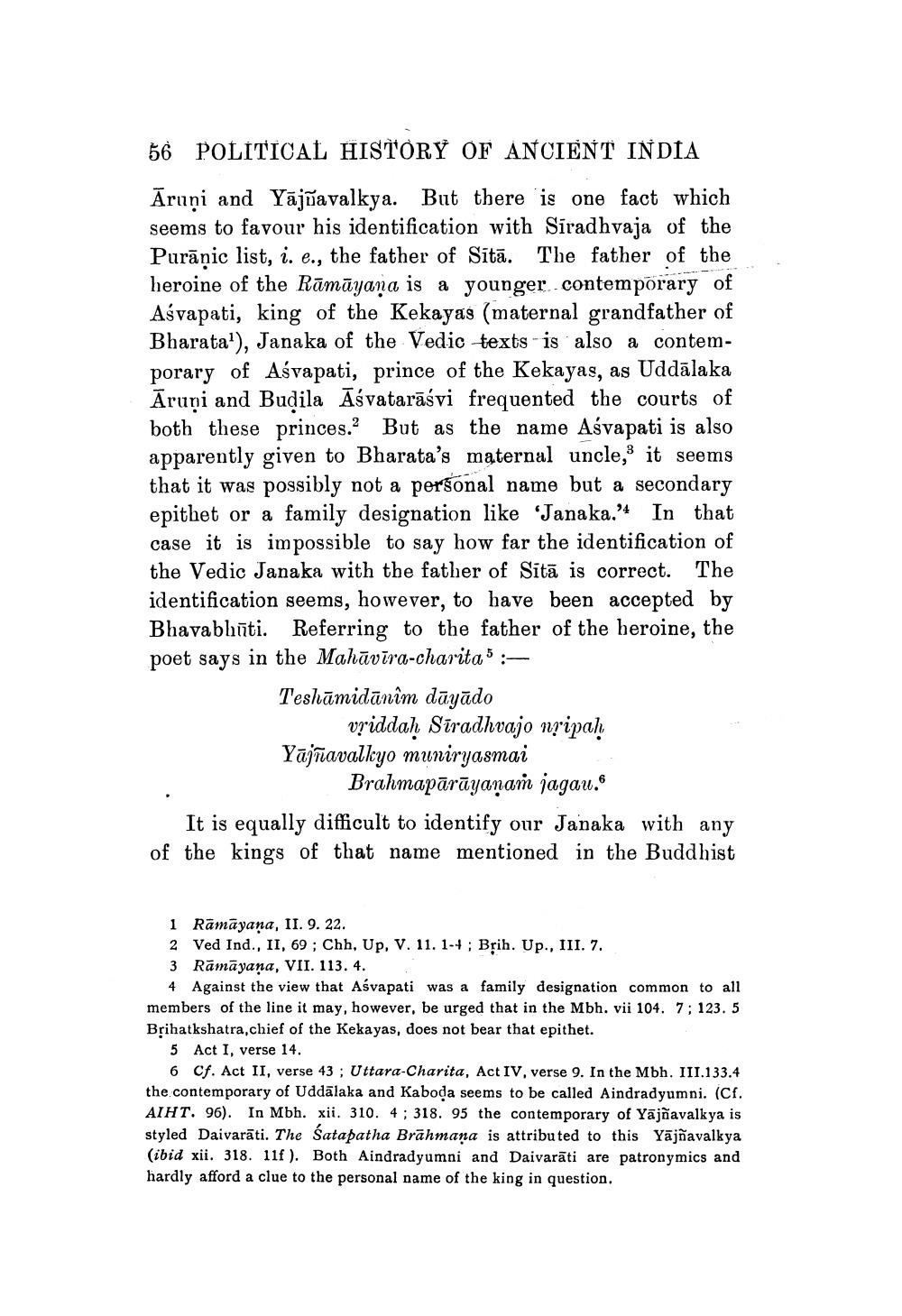________________
56 POLITICAL HISTORY OF ANCIENT INDIA Āruņi and Yājõavalkya. But there is one fact which seems to favour his identification with Siradhvaja of the Purāṇic list, i. e., the father of Sītā. The father of the heroine of the Rāmāyana is a younger .contemporary of Aśvapati, king of the Kekayas (maternal grandfather of Bharata'), Janaka of the Vedic texts is also a contemporary of Aśvapati, prince of the Kekayas, as Uddālaka Āruņi and Buļila Āśvatarāśvi frequented the courts of both these princes. But as the name Aśvapati is also apparently given to Bharata's maternal uncle, it seems that it was possibly not a personal name but a secondary epithet or a family designation like 'Janaka." In that case it is impossible to say how far the identification of the Vedic Janaka with the father of Sitā is correct. The identification seems, however, to have been accepted by Bhavabhūti. Referring to the father of the heroine, the poet says in the Mahāvīra-charitas :
Teshāmidānim dāyādo
vriddah Siradhvajo nripah Yajñavalkyo muniryasmai
Brahmapārāyanam jagau. It is equally difficult to identify our Janaka with any of the kings of that name mentioned in the Buddhist
1 Rāmāyana, II. 9. 22. 2 Ved Ind., II, 69 ; Chh, Up, V. 11. 1-+; Brih. Up., III. 7. 3 Rāmāyana, VII. 113. 4.
4 Against the view that Aśvapati was a family designation common to all members of the line it may, however, be urged that in the Mbh. vii 104. 7; 123. 5 Brihatkshatra,chief of the Kekayas, does not bear that epithet.
5 Act I, verse 14.
6 Cf. Act II, verse 43 ; Uttara-Charita, Act IV, verse 9. In the Mbh. 111.133.4 the contemporary of Uddālaka and Kaboda seems to be called Aindradyumni. (Cf. AIHT. 96). In Mbh. xii. 310. 4 ; 318. 95 the contemporary of Yājñavalkya is styled Daivarāti. The Satapatha Brāhmana is attributed to this Yājñavalkya (ibid xii. 318. 11f). Both Aindradyumni and Daivarāti are patronymics and hardly afford a clue to the personal name of the king in question.




